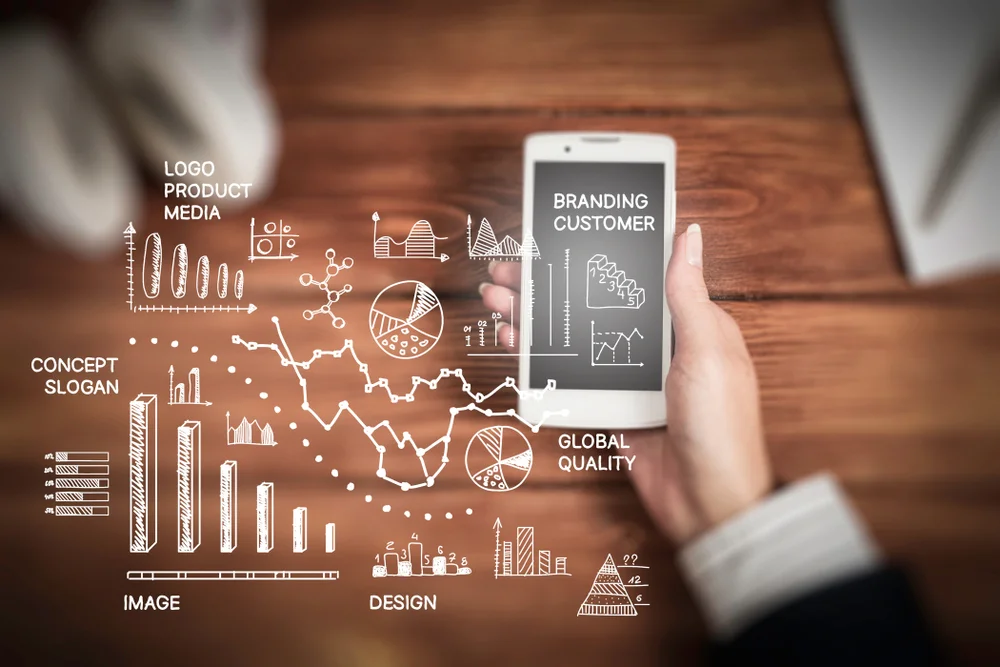Mobile technology has disrupted the marketing landscape, with businesses taking the mobile-first approach for all their marketing plans. Let’s talk about the mobile marketing hails and fails in the first half of 2019 and how they can shape your mobile marketing strategy.
To gauge how businesses have devised their mobile marketing strategies in 2019, let’s take a look at some statistics compiled by MobileMarketer:
Learn More: 5 Tips to Ace Your B2C Mobile Marketing Strategy in 2019
To help you keep up with the best mobile marketing strategies, we have identified the top trends and key learnings from the first half of 2019.
In a mobile-first world, it has now become imperative for companies to reach out to their target audiences on mobile devices and deliver consistent and compelling mobile experiences.
Here are our key learnings for an effective mobile marketing strategy.
Marketing on mobile devices can help you reach your customers anytime, anywhere. If you can tie your marketing message into ‘micro-moments’ – where a customer reaches for their mobile device to search or look up a product or service on the go – you can capitalize on such moments and satisfy customers’ needs.
Location-based marketing is one such way to also capture customers’ attention. Most customers search for deals when they are out shopping, look for local specialties while traveling or visiting your competitors because they are unaware of your presence or better deals that you might offer.
You can leverage beacon technology, geofencing, and geotargeting in your mobile marketing strategy.
Example: Burger King geofenced rival McDonald’s locations to send a discount voucher to customers entering the fenced area (near McDonald’s) stores. Not only did they build brand love but also wooed away customers with a discount.
Burger King Campaign Instructing Customers on How to Receive a Discount Near McDonald’s
Learn More: 4 Reasons Why Location-based Marketing is Set to Disrupt Marketing in 2019
Alexa, Siri, and Google Assistant are getting increasingly ‘smarter’ with the power of Artificial Intelligence. With voice and conversational search gaining popularity, brands are looking to tap into sponsored search.
Loaded with customers’ search, check-in, and purchase history, brands can build deeper connections and recommend contextually relevant actions to create seamless experiences.
Example: If a customer asks her voice assistant, “Where can I plan a romantic candlelight dinner”?, apart from offering to book reservations in a popular themed restaurant, the assistant could also recommend an outfit from Macy’s or an Estée Lauder Perfume for the evening.
User-generated content (UGC) is undoubtedly the hottest trend because it is more engaging and authentic. UGC campaigns help you strike a chord with your customers, generate fresh and impactful content, and get your message across through word of mouth marketing.
UGC campaigns work especially well for your mobile marketing strategy, as users can send messages, tweet, click photos, create videos, upload, and do much more wherever they are.
Example: Marc Anthony’s True Professional Line ran a UGC campaign on TikTok where users made humorous before and after videos of themselves using the shampoo which went viral in no time. The campaign saw a 60% jump in sales.
Social media is now becoming a one-stop-shop for users. They build relationships, explore ideas, get inspired, and even shop on social media. With the launch of the Checkout feature on Instagram and Product Pins for easy shopping on Pinterest, shopping has become seamless on social media.
Example: Brands such as Dior, Huda Beauty, Kylie Cosmetics, Nike, Warby Parker, and Zara are leveraging the shopping features (currently in beta) to boost their online sales. Adidas saw a 40% increase in its year on year online sales for the first quarter of 2019.
AR is popular for the immersive and near-real experiences it creates. But marketers find it difficult to execute AR since it is expensive, and it isn’t clear how it can solve customer challenges.
If AR can be used to augment the user experience and help them understand how a product can be of use to them, only then can AR-based campaigns truly spell success.
Example: Popular AR-based game Pokémon’s, Pokemon Pass collaborated with Target to boost their in-store traffic in select stores, where players could add Pokémon to their game by visiting a Target store.
The Official Ad Informing Players to Collect Shiny Pikachu and Shiny Eevee at Target
Fashion and beauty brands such as L’Oreal, Michael Kors, and more have used Snapchat lenses and Instagram filters to give shoppers a preview of the application of their products that helps influence purchase decisions.
Learn More: The 6 Best Augmented Reality Marketing Campaigns We’ve Seen So Far
Here is what we learned from the first half of 2019 that will help you create an effective mobile marketing strategy:
A mobile-first approach with an eye on resolving customer challenges and leveraging customer data with technology are the essentials of a ‘good’ mobile marketing strategy. Providing relevant, contextual experiences in micro-moments is currently the hottest trend to watch out for.
Share your favorite mobile marketing strategies & trends with us on Twitter or LinkedIn or Facebook; we’re always listening!
Join us at SpiceWorld
Level up your IT game at our premier conference where IT pros and industry experts come together.
Snap! — ExoMars 2028, April Fool Disasters, Nuclear Battery in Production
HP Image Assistant – Running Scripts
SpiceQuest April (2025) — Of Stories and Spiders
On June 22, Toolbox will become Spiceworks News & Insights
© Copyright 2006 – 2025 Spiceworks Inc.

